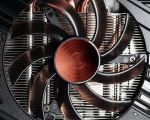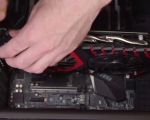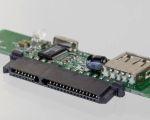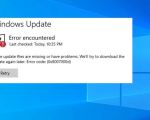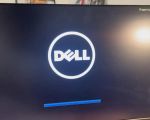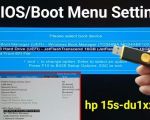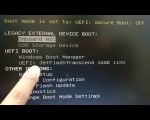How to Boot Your Computer to Repair Boot Errors
Experiencing boot errors on your computer can be frustrating, especially when you need to access important files or complete work tasks. Whether you're encountering a blue screen, your computer won't start, or it freezes during the boot process, knowing how to boot your computer to repair boot errors can save you time and trouble. In this guide, we'll walk you through several methods to troubleshoot and repair boot issues on both Windows and Mac systems, ensuring your device is back up and running smoothly.

Best Buy
4210 Centerplace Dr, Greeley, CO 80634, USA
1. Understand What Boot Errors Are
Before diving into the solution, it's essential to understand what boot errors are and how they affect your system. Boot errors occur when your computer's operating system fails to load during startup. This could be due to a corrupted operating system file, damaged hardware, or software conflicts. In some cases, these errors can be easily fixed, but in other instances, a more in-depth approach is required.
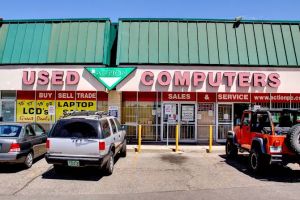
Action Computers Inc. -- Denver Location
2890 S Colorado Blvd F, Denver, CO 80222, USA
2. Boot from a Recovery Drive
If you're unable to boot your computer into Windows or macOS, using a recovery drive is often the most straightforward solution. A recovery drive can help you troubleshoot issues by loading a recovery environment. Here’s how to use it:
- For Windows: Insert a USB drive with the recovery tool and restart your computer. Press F12 (or the key for your system) to access boot options and select the recovery drive. From there, choose 'Troubleshoot' and follow the prompts to repair the boot error.
- For Mac: Restart your Mac and immediately hold down Command + R to boot into macOS Recovery. Use the 'Disk Utility' or 'Reinstall macOS' options to repair or reinstall the operating system.
3. Use the Startup Repair Tool in Windows
Windows has a built-in Startup Repair tool designed to fix common boot errors. Here’s how you can use it:
- Insert your Windows installation disk or USB recovery drive and restart your PC.
- Press the necessary key (usually F12 or Esc) to access the boot menu and select the recovery drive.
- Choose 'Troubleshoot,' then 'Advanced options,' and click on 'Startup Repair.'
- Follow the on-screen instructions to let Windows diagnose and attempt to fix the boot errors.
4. Perform a System Restore
If the startup repair doesn't work, you can try restoring your system to a previous state before the error occurred. This can be especially helpful if the issue is caused by recent software updates or changes. Here's how:
- For Windows: Boot from a recovery drive and select 'Troubleshoot.' Choose 'Advanced options' and select 'System Restore.' Follow the prompts to restore your system to an earlier date.
- For Mac: Boot into macOS Recovery (Command + R), select 'Time Machine' and choose the most recent backup to restore your system.
5. Repair Corrupted System Files Using Command Prompt
For more advanced users, repairing corrupted system files through Command Prompt can fix boot issues. Here’s how to do it:
- For Windows: Boot from your Windows recovery drive and select 'Troubleshoot' -> 'Advanced options' -> 'Command Prompt.' In the command prompt window, type
sfc /scannowand press Enter. This command will scan and repair corrupted system files. - For Mac: Open 'Terminal' from the macOS Recovery mode and use the
fsckcommand to check and repair your file system.
6. Check for Hardware Issues
If none of the above solutions work, it’s possible that the issue lies with your computer's hardware. Common culprits include a failing hard drive or damaged RAM. You can run hardware diagnostic tests to identify the problem:
- For Windows: Many PC manufacturers provide built-in diagnostic tools. Access the BIOS or UEFI settings and look for the option to run a hardware diagnostic.
- For Mac: Use Apple's built-in hardware diagnostic tool by restarting your Mac and holding down the 'D' key. Follow the on-screen instructions to run the test.
7. Reinstall the Operating System
If all else fails, reinstalling the operating system may be your best bet. This will erase all data on the system drive, so it's crucial to back up important files beforehand. Reinstalling can help eliminate all issues that might have been caused by corrupted system files or software conflicts.
- For Windows: Insert your installation media, boot from it, and follow the instructions to reinstall Windows.
- For Mac: Boot into macOS Recovery and select the option to reinstall macOS. Follow the prompts to complete the installation.
8. When to Seek Professional Help
Sometimes, boot errors can be too complex for home troubleshooting. If you've tried the above steps and still face issues, it may be time to seek professional help. A technician can assess the hardware, reinstall the operating system, or repair corrupted files more thoroughly. If you’re unsure, don’t hesitate to contact professionals who specialize in computer troubleshooting and repair.
At Computer Repair, we specialize in fixing boot errors and ensuring that your system runs smoothly. Whether you're dealing with a hardware failure or software issues, our experts are here to help.











